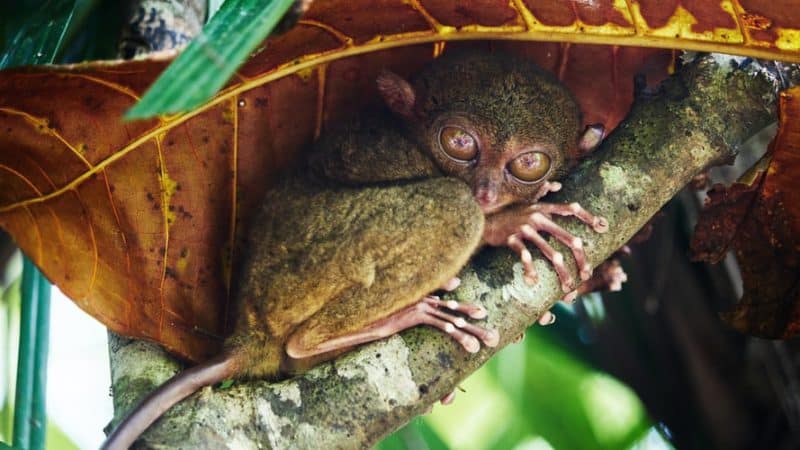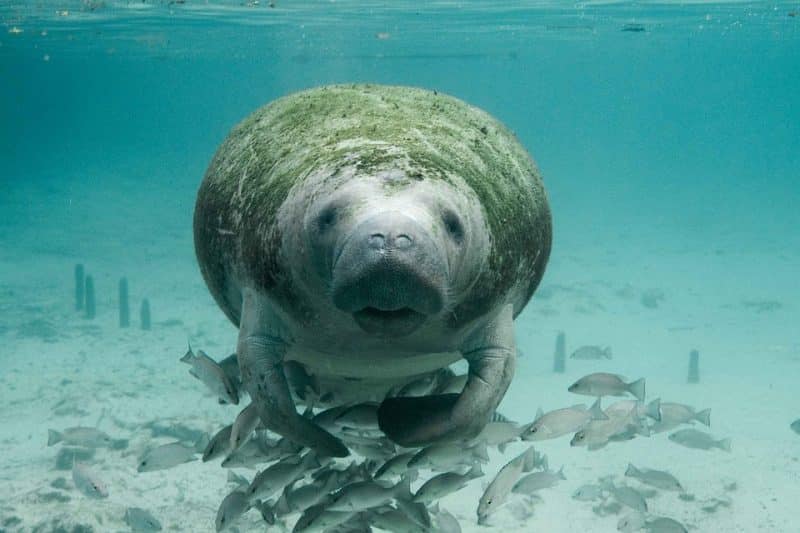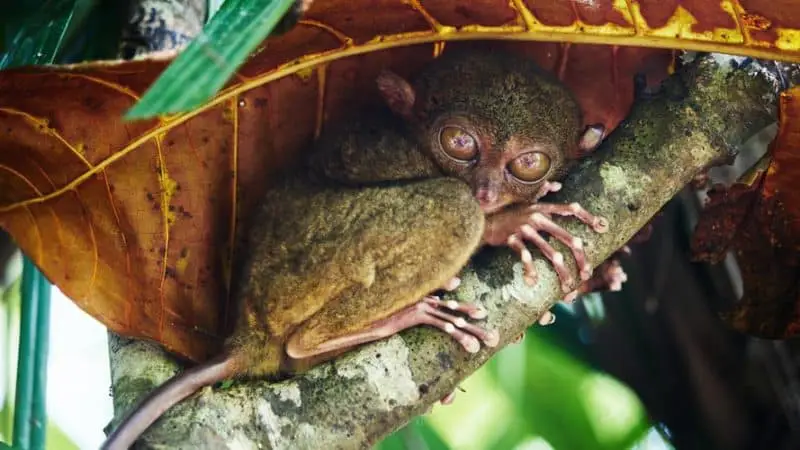Curious to learn more about animals and wildlife in the Philippines?
More than 200 species of mammals inhabit the Philippines. It is an archipelago consisting of some 7,100 islands and islets lying about 500 miles (800 km) off the coast of Vietnam.
The Philippines, with its diverse landscape of mountains, dense forests, plains, and coastal regions, boasts a rich biodiversity. This variety is evident in the wide range of wildlife found throughout the country.
About animals in the Philippines
The Philippines has several natural wonders, such as a renowned underground river and iconic rice terraces. Thanks to its rich marine biodiversity, it’s also a prime destination for diving enthusiasts. The country features distinctive and colorful public transportation, unique and flavorful cuisine, vibrant festivals showcasing its rich culture, and the exceptional hospitality of its people.
To find out more about the wildlife of the Philippines, take a look at the animals below:
Enjoy reading about nature in the Philippines.
Key Points
| Animal | Key Points |
|---|---|
| Tamaraw | – Small hoofed mammal endemic to Mindoro, Philippines – Only wild cattle species in the country – About 580 surviving individuals |
| Philippines Crocodile | – Once widespread, now found in fragmented habitats – Primarily found in freshwater rivers, ponds, and marshes |
| Tarsier | – Reserved and nocturnal creature, living a largely concealed existence – Spends its day sleeping in shadowy nooks near the ground |
| Philippine Warty Pig | – Endemic to the Philippines – Population steadily decreasing |
| Philippine Deer | – Nocturnal and endangered species – Endemic to various Philippine islands – Extinct in some islands |
| Binturong (Bearcat) | – Viverrid native to South and Southeast Asia – Uses tail as a fifth limb for climbing |
| Palawan Peacock Pheasant | – Shy bird endemic to Palawan Island – Vulnerable due to habitat loss and exploitation |
| Dugong | – Marine mammal found in warm Indian and Pacific Oceans – Herbivorous, graze on seagrasses |
| Whale Shark | – Largest known fish species – Found in tropical and warm temperate seas – Seen in multiple Philippine locations |
| Thresher Shark | – Large shark found in temperate and tropical oceans – Shy and difficult to approach |
#1 Tamaraw/ Mindoro Dwarf Buffalo

The Tamaraw, also known as the Mindoro dwarf buffalo and scientifically referred to as Bubalus mindorensis, is a diminutive hoofed animal part of the Bovidae family. This unique species is found solely on the Philippine island of Mindoro, distinguishing it as the sole bovine species native to the Philippines.
The tamaraw is a heritage species of significant importance for the Philippines. It is the only wild cattle species living in the country and occurs only on the island of Mindoro.
There are likely no more than 580 tamaraws surviving today on the island.
Where to see animals in the Philippines: Buffalo

Mindoro is the seventh most significant island in the Philippines by land area. Aside from the island’s op-rated but still quite beautiful beaches, people also come for the great outdoors featuring rivers, lakes, and gorgeous mountains.
Diving is also a popular activity, given the island’s proximity to one of the wealthiest diving spots in the country.
#2 Philippines Crocodile

Philippine crocodiles were once prevalent throughout the Philippines but are currently only found in small, fragmented habitats on Dalupiri, Luzon, and Mindanao islands.
They primarily live in freshwater rivers, ponds, and marshes.
#3 Tarsier

The Philippine Tarsier is a reserved and nocturnal creature, living a largely concealed existence. It spends its days sleeping in shadowy nooks near the ground.
#4 Philippine Warty Pig

The Philippine warty pig is one of four known species in the pig genus endemic to the Philippines.
Unfortunately, their population is steadily decreasing.
#5 Philippine Deer

The “Visayan spotted deer,” also known as the Philippine spotted deer, is an endangered and nocturnal deer species predominantly found in the rainforests of Panay and Negros in the Visayas. Its range was once more extensive, covering additional islands.
The Philippine deer, a species native to the Philippines, is found on several islands including Luzon, Polillo, Catanduanes, Mindoro, Samar, and Leyte. There are concerns about its extinction on Biliran, Bohol, and Marinduque. Additionally, it has been officially declared extinct on Dinagat and Siargao Islands.
#6 Binturong/ Bearcat

Binturongs are also called bearcats, but that name is misleading since they are unrelated to bears or cats. Instead, they are connected to civets and fossas.
The binturong, or bearcat, is a viverrid ( Small- medium mammal) native to South and Southeast Asia. They live in the rainforests of Southeast Asia.
The animal uses its tail, almost as long as its body, as a fifth limb when it climbs through the forest. This tail is prehensile, which means it’s capable of gripping things. The binturong is one of only two carnivores with a prehensile seat—a remarkable mammal.
#7 Palawan Peacock Peasant

This is a shy and elusive bird endemic to the humid forests of Palawan Island in the Archipelago.
Unfortunately, due to declining habitat and exploitation, the Palawan Peacock Pheasant is evaluated as Vulnerable on the IUCN Red List of Threatened Species,
#8 Dugong

The dugong is a species of sea cow found throughout the warm latitudes of the Indian and western Pacific Oceans. Dugongs, closely related to manatees, share a similar plump body shape but are distinguished by their dolphin-like fluke tails. Unlike manatees, which are known to inhabit freshwater environments, dugongs are exclusively marine mammals.
Like all sea cows, the dugong is herbivorous, and it primarily grazes on sea grasses and spends most of its time in seagrass beds.
Where to see animals in the Philippines: Currently, only scattered populations of dugongs remain, with significant groups found in the waters around the Calamian Islands in Palawan, Isabela in Luzon, Guimaras, and Mindanao. The dugong is the first marine animal to receive protection under Philippine law, which includes stringent penalties for causing them harm.
#9 Whaleshark

The whale shark (Rhincodon typus), known for its gentle, filter-feeding behavior, is a type of carpet shark and is recognized as the largest existing fish species. Whale sharks are widely distributed in tropical and warm temperate seas, typically between the latitudes of 30°N and 35°S. They are known to dwell in both deep and shallow coastal waters, as well as in the lagoons of coral atolls and reefs.
The whale shark is notable in the animal kingdom for its immense size, particularly as the largest living non-mammalian vertebrate.
Where to see animals in the Philippines: There are a couple of places to swim with the fantastic G monsters around the 7 000 islands that make up the Philippines. The Philippines’ best places to swim with whale sharks are Leyte, Tubbataha, Donsol, and Oslob.
In the Philippines, Whale sharks are visible year-round in certain areas. Notably, the prime season for spotting whale sharks in Donsol and Southern Leyte, including regions such as Padre Burgos and Pintuyan, spans from October to May. The season for observing whale sharks typically spans from April to October in Honda Bay, located in Palawan.
#10 Thresher Shark

Thresher sharks are sizable species that inhabit temperate and tropical oceans across the globe. They may explicitly be found in temperate waters around the world. In the northwest Atlantic Ocean, they range from Newfoundland to Cuba. The thresher shark is considered harmless, and the species is shy and difficult to approach.
Malapascua Island in the Philippines is the best place to see thresher sharks. From here, divers can reliably see pelagic thresher sharks regularly. Famous for its thresher sharks and abundant macro life, Malapascua is a fantastic dive destination with beautiful beaches and a restful, relaxing island.
Do you want to dive with sharks in the Philippines?
Make sure to assess the ethics behind the activity before participating. For information regarding where and how to ethically see sharks in the Philippines, look at this information.
Summary of Animals in the Philippines

Aside from the breathtaking wildlife, the Philippines hosts scenic landscapes is home to the friendliest locals, unforgettable cuisines, and untouched beaches, and boasts many opportunities to embark on activities and adventures in nature. A location for everyone’s bucket list!
If you enjoyed learning about the animals in the Philippines Islands, you might like our feature Asian Animals blogs; Wildlife in Thailand, the Wildlife in the Maldives, and Vietnam.
Frequently Asked Questions (FAQs)
The Philippines is home to a diverse range of wildlife, including unique and endemic species. Some notable animals include the tamaraw (Mindoro dwarf buffalo), Philippine crocodile, tarsier, Philippine warty pig, Philippine deer, binturong (bearcat), Palawan peacock pheasant, dugong, whale shark, and thresher shark.
The tamaraw (Mindoro dwarf buffalo) is an animal that can only be found in the Philippines. It’s endemic to the island of Mindoro and is the only endemic Philippine bovine.
The dugong, a marine mammal, is one of the largest wild animals in the Philippines. It inhabits warm Indian and Pacific Ocean waters and is known for its herbivorous diet.
- 10 Most Endangered Animals - April 15, 2024
- Top 10 Cutest Fish in the World - April 15, 2024
- 16 Top Predators in the Food Chain - April 12, 2024

